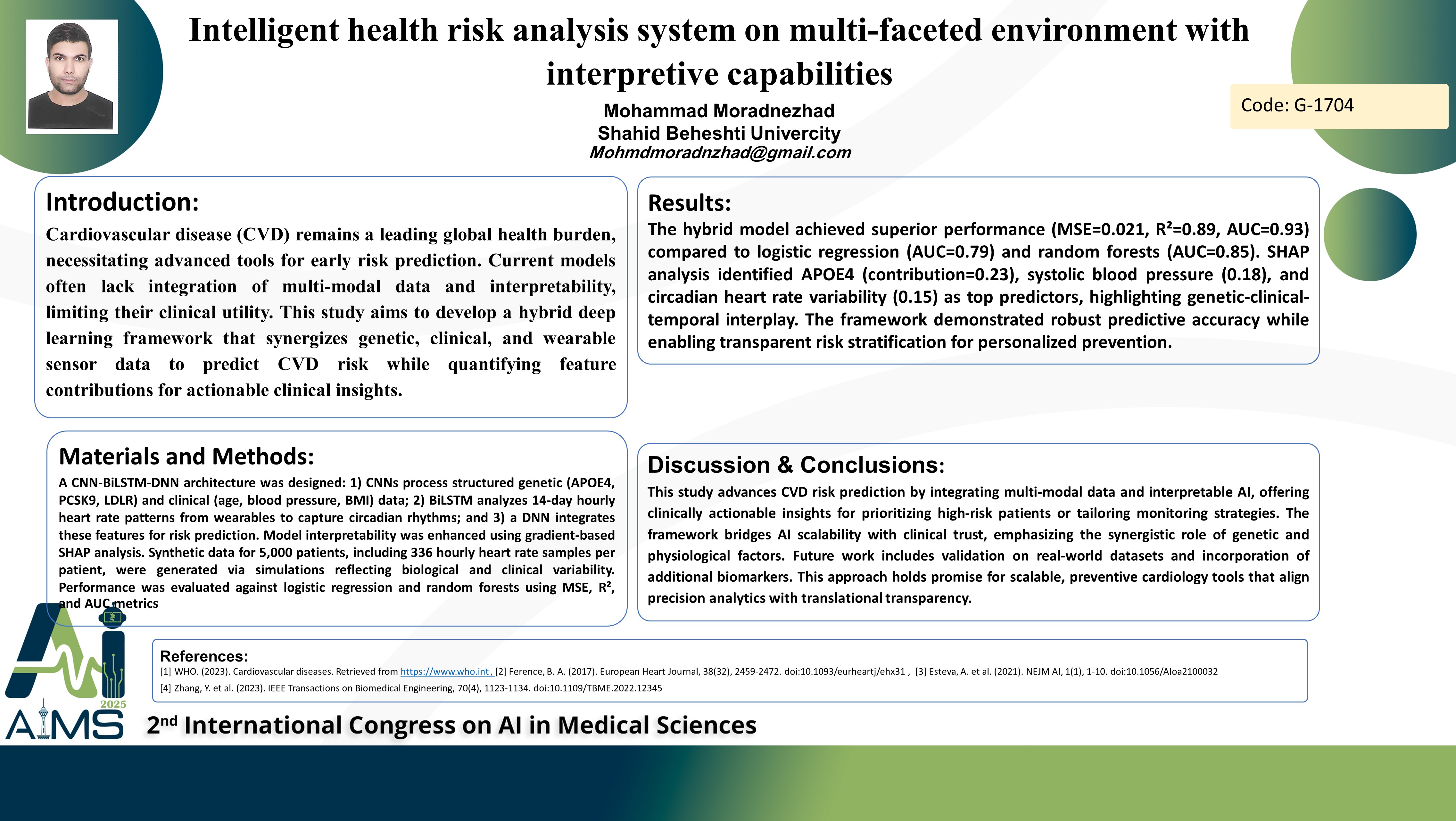Intelligent Health Risk Analysis System Based On Multimodal Deep Learning With Interpretability
Code: G-1704
Authors: Mohammad Moradnezhad * ℗
Schedule: Not Scheduled!
Tag: Intelligent Virtual Assistant
Download: Download Poster
Abstract:
Abstract
Background and aims: Cardiovascular disease (CVD) remains a leading global health burden, necessitating advanced tools for early risk prediction. Current models often lack integration of multi-modal data and interpretability, limiting their clinical utility. This study aims to develop a hybrid deep learning framework that synergizes genetic, clinical, and wearable sensor data to predict CVD risk while quantifying feature contributions for actionable clinical insights. Method: A CNN-BiLSTM-DNN architecture was designed: 1) CNNs process structured genetic (APOE4, PCSK9, LDLR) and clinical (age, blood pressure, BMI) data; 2) BiLSTM analyzes 14-day hourly heart rate patterns from wearables to capture circadian rhythms; and 3) a DNN integrates these features for risk prediction. Model interpretability was enhanced using gradient-based SHAP analysis. Synthetic data for 5,000 patients, including 336 hourly heart rate samples per patient, were generated via simulations reflecting biological and clinical variability. Performance was evaluated against logistic regression and random forests using MSE, R², and AUC metrics. Results: The hybrid model achieved superior performance (MSE=0.021, R²=0.89, AUC=0.93) compared to logistic regression (AUC=0.79) and random forests (AUC=0.85). SHAP analysis identified APOE4 (contribution=0.23), systolic blood pressure (0.18), and circadian heart rate variability (0.15) as top predictors, highlighting genetic-clinical-temporal interplay. The framework demonstrated robust predictive accuracy while enabling transparent risk stratification for personalized prevention. Conclusion: This study advances CVD risk prediction by integrating multi-modal data and interpretable AI, offering clinically actionable insights for prioritizing high-risk patients or tailoring monitoring strategies. The framework bridges AI scalability with clinical trust, emphasizing the synergistic role of genetic and physiological factors. Future work includes validation on real-world datasets and incorporation of additional biomarkers. This approach holds promise for scalable, preventive cardiology tools that align precision analytics with translational transparency.
Keywords
Cardiovascular-Disease Prediction, CNN-BiLSTM-DNN-Hybrid, Smart medicine, Smart-Medical-Assistant
